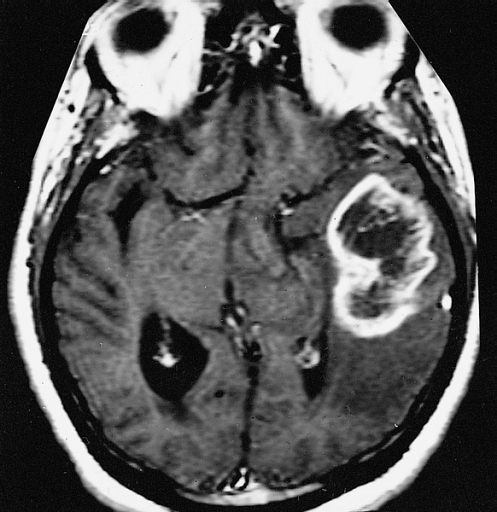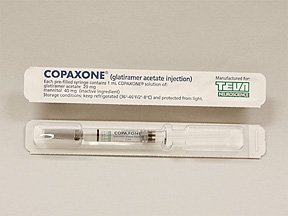Disclaimer: This page may contain affiliate links. We may earn a small commission for purchases made through links in this post, at no extra cost to you.
Severe Onset MS
(or tumefactive MS)
What is severe onset MS? According to Breea's mom -
"Multiple sclerosis affects 2.5 million people worldwide, including 400000 Americans. Few of these are young adults and less rare are teens. Fewer still are those with a catostrophic onset. This is what happened to Breea Renee. This video shares her story, her journey back from being paralyzed and blind on her left side, and proves that with determination and laughter, the love of family and friends, and the right medical team, healing is possible!"
First of all, please watch the following video about Breea, an 18 year old young woman who developed this severe type of MS and within 24 hours she was blind in her left eye and paralyzed on her left side. She could not talk, walk, or swallow. She spent the next 6 weeks in the hospital. With the support of her amazing family and health care team, she is now back to herself.
A beautiful and inspiring story about a young woman who is determined not to let go of her dreams. You can also catch up with her on Facebook - Help Breea Beat MS. (Opens in a new window)
What is severe onset MS?
This rare type of MS is also called tumefactive MS. It is characterized by lesions which are 2 cm or more in size. On an MRI, they look similar to a tumor or "tumor-like" and "may mimic the clinical and magnetic resonance imaging characteristics of glioma or a cerebral abscess". (NCBI - National Institutes of Health)
I know I've never heard of those and it is not a common type of MS that doctors see everyday either. Four things are usually present when a patient presents with this type of severe onset MS:
- 2 cm or larger in size
- mass effect
- edema
- open ring enhancement
The size is pretty self explanatory, however the next three may require a little explanation if you aren't a medical doctor, technician, or researcher.
Mass effect - this is the effect of a mass, in this case, a lesion, which exerts pressure on the brain matter surrounding it. Pretty simple to understand.
Edema - If you've every had this, swelling, you know what it means. In this case, there is a build up of fluid in the brain tissue.
Open Ring Enhancement - the lesion almost always has an open ring enhancement. What this means is that the ring surrounding the lesion is open and not complete. A better way to show this is with an MRI image. The following is a tumefactive lesion with open ring enhancement. If you will notice the right side seems to not close all the way - it's not a perfectly closed ring.
Sometimes these lesions are mistaken for a malignant glioma - a tumor that starts from glial cells or a specific kind of cell found in the brain or spinal cord. They are also mistaken for cerebral abscess - a brain infection stemming from somewhere in the head (local area), like an ear, or sinus infection. Or an infection from a more remote area like the heart, or lungs.
Symptoms can mimic other things
Because the damage that occurs effects such a large area of the brain or spinal cord, symptoms can be severe and they can also come on relatively quickly. The symptoms are similar to those from other types of MS, like foot drop, decreased arm or leg mobility, spasticity, or fatigue. This form of MS can also mimic ischemic stroke, nerve palsy, and intracranial neurologic disease.
Stroke-like symptoms can be confusion and weakness on one side of the face.
There are two tests that can help the doctor with a diagnosis. One, the MRI, is used in most cases of MS, and two, the H-MRS or Proton MR Spectroscopy does the following:
"H-MRS identifies biochemical changes in the brain such as the quantity of metabolic products of neural tissue including choline, creatine, N-acetylaspartate (NAA), mobile lipids and lactic acid. When demyelination is occurring, there is breakdown of cell membranes resulting in an increase in the level of choline. NAA is specific to neurons and thus, a reduction in NAA concentration indicates neuronal or axonal dysfunction. As such, the levels of choline and NAA can be measured to determine if there is demyelination activity and inflammation in the brain. Usually, the ratio of choline to NAA is used" - Wikipedia
Once all possible causes are ruled out, along with all other brain cancers or cancers spreading from other parts of the body, and diagnosis is made, then treatment can begin.
Treatment of severe onset MS
Because this type of MS is relatively rare and can potentially cause a lot of damage to the central nervous system, it it more likely be treated aggressively. Treatments can range from corticosteroids, to chemotherapy, to disease modifying drugs and immunosuppressants. Alternative treatments like high dose vitamin d3, can be used as well.
The video above, shows Breea's many different treatments, including physical therapy to help her regain her ability to walk, talk, use her left arm, and overall to strengthen her body. Watching her progress is such an inspiration to us all.
To encourage (and be inspired by) Breea, click her to go to her Facebook page. (Link opens in a new window).
Go from Severe Onset MS to Types of MS.
Dear Friends,
"Life in Spite of MS is a participant in the Amazon Services LLC Associates Program, an affiliate advertising program designed to provide a means for sites to earn advertising fees by advertising and linking to Amazon.com. We're also part of the Ebay Partner Network, another affiliate program."
We'd also like you to know it doesn't cost one cent more when you click through the links here on our blog. Not one single penny. And we will make a little extra cash when you do click through. We'll be ever so appreciative. You also have our word that we'll only link to things that we would use ourselves, (or wish we could have or use).
Sincerely,
Cir & Akrista
You are reading original content written by Akrista or Cir L'Bert of Life in Spite of MS. If you enjoyed reading this blog, please consider following us on Facebook, Twitter, Pinterest, and Instagram. See you there!
Privacy Policy ~ Advertising Policy ~ Disclaimer ~ Contact Us ~ About Us



New! Comments
Have your say about what you just read! Leave me a comment in the box below.